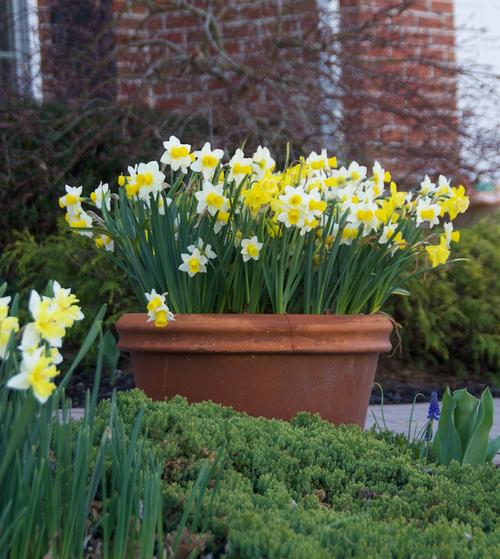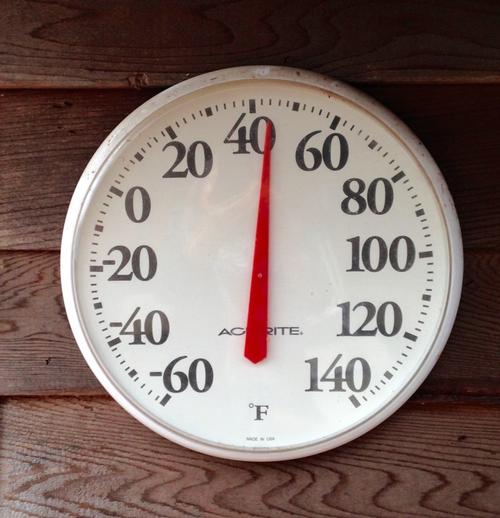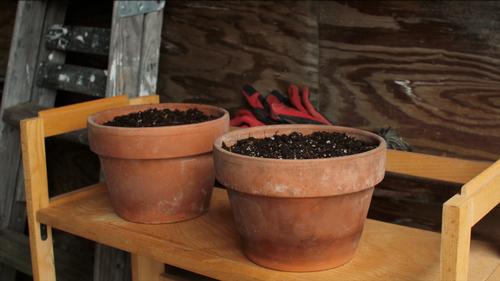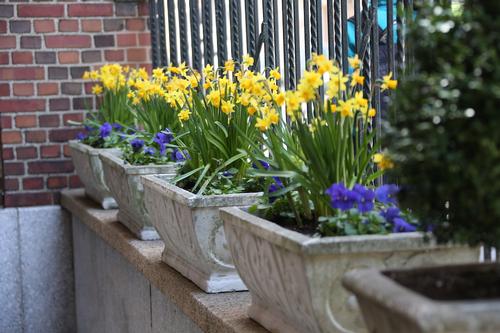HOW TO GROW SPRING BULBS IN CONTAINERS
Planting bulbs in containers gives you a movable feast of breathtaking spring color. It’s a great solution if your time, mobility or outdoor space is limited. Even if you already plant bulbs in your garden and landscape, growing in containers opens up new ways to experiment with color and bloom time. Potted bulbs also make it easy share your love of gardening with friends and neighbors.

Tips for Success
CONTAINER OPTIONS. Almost any type of container will work as long as there’s a drainage hole in the bottom and enough room for the bulbs. Terracotta pots always look good with spring bulbs. Inexpensive nursery pots also work well, especially if you can drop them into a more decorative pot as the flowers come into bloom. Generally, you’ll want to match the size of the pot to the size of the flowers. Reserve small pots for crocus and muscari, midsize for hyacinths, and larger pots for tulips and daffodils.
PLANTING DEPTH AND SPACING. Check the planting depth instructions on the package. Bulbs in pots can be planted more shallowly than bulbs the garden, but using the recommended depth will help the flowers stand tall. Be sure to allow at least 2" under the bulbs for root growth. Position the bulbs closely together – no more than an inch apart. Tulips look best when the bulbs are planted with the flat side facing out.

TEMPERATURE. Most fall-planted bulbs, including tulips, daffodils, hyacinths and crocus, need to be chilled for 8 to 12 weeks before they will produce fully-formed flowers. During this chilling period, the soil temperature should be at 35 to 45°F; consistently cold, but above freezing. Though daffodils will tolerate being frozen for short periods of time, tulips, hyacinths and most other bulbs will not.
GROWING MIX. Don't plant your bulbs in garden soil or compost. Instead, use a quality soilless growing medium such as ProMix. Moisten it well before filling the pots (warm water works best).
MOISTURE. After the bulbs have been planted, water just enough to settle the soil. During the chilling period, the soil should be damp, but not wet. Depending on the climate, containers stored outdoors may need to be protected from excess moisture. If critters (squirrels and mice) pose a threat, cover the tops of the pots with wire mesh or a sheet of plywood.

WHERE TO STORE THE CONTAINERS. Finding a good place to keep the containers during the winter months can be the trickiest part of the process. The bulbs need to be cold, but must not freeze. Daffodils and some of the smaller bulbs may tolerate being frozen for a brief time, but hyacinths and tulips usually won't.
If you live in growing zones 9-10, outdoor temperatures will probaby not be cold enough for proper flower development. You'll need to chill the bulbs before planting or plant the bulbs and then put the containers in a cooler.
In growing zones 7 and 8, you may be able to simply leave the containers outdoors. If you live where winters are wet, the pots may need to be covered to keep the soil from getting soggy. To bloom properly, outdoor temperatures should stay at 35 to 45°F for a minimum of 8 weeks. If temperatures are not cold enough or the cold doesn't last long enough, the flowers may be stunted or deformed.
In zones 5 and 6, you may be able to insulate the containers by putting them in a cold frame, burying them or wrapping them with bubble wrap. Containers filled with bulbs can also be stored in an attached garage as long as it's warm enough to keep the soil from freezing. Be aware that exhaust fumes can stunt or kill flower bulbs.
In zones 3 and 4, the best place to store bulbs is in a cold cellar or second refrigerator. Another option is to dig a shallow trench in your vegetable garden and bury the pots under a thick layer of straw or leaves. You may need to use hardware cloth to protect the bulbs from voles and mice.

WAKING THE BULBS. As spring approaches, start watching for the bulbs to sprout. When you see green shoots, bring the pots out into the light and display them indoors or out, in sun or shade. Cool temperatures and indirect light will extend the life of the flowers.
AFTERCARE. Container-grown spring bulbs are usually treated as annuals. If you want to try saving the bulbs, remove the spent flowers and keep the plants growing until the foliage has yellowed. Then dig up the bulbs and either replant them in your garden or store them in a cool, dry place until the next fall. Tulip bulbs should be replaced each year.
